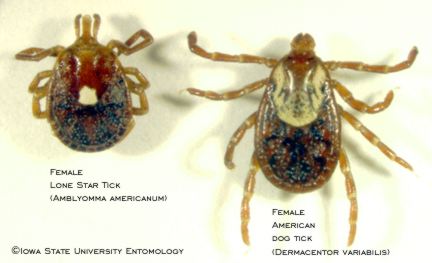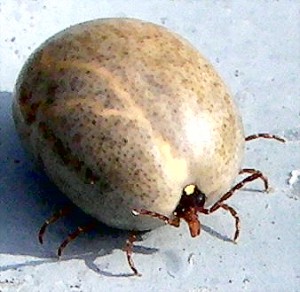
Lone Star Tick
Lone Star Tick (Amblyomma americanum)
Lone Star Tick is not known to transmit Lyme Disease. The tick get its common name from a silvery spot supposedly shaped like Texas (to me, the spot looks more like Iowa) located on the dorsal side of the adult female tick. The tick is most abundant in the southeastern U.S., particularly in the Ozark region and eastern Oklahoma. It is known to occur throughout southern Michigan. The bite of this tick can be quite severe and often accompanied by extensive inflammation, suppuration and subsequent development of lesions. Although not known to transmit Lyme Disease, the tick is associated with other serious tick-born diseases including tick paralysis, Rocky Mountain Spotted Fever and tularemia. Most cases of Rock Mountain Spotted Fever reported in Michigan have been from southern counties located directly north of the Toledo Airport. Be on alert for any rash or fever, the primary symptoms of both Rocky Mountain Spotted Fever and tularemia that develops after a tick bite.
For future reference, the safest method of removing an attached tick is by a slow steady pull with a pair of tweezers placed as close to the mouthparts as possible. Be careful not to squeeze the tick’s body, as this will inject the contents of the tick into the wound. Wash the bite thoroughly and apply an antiseptic.





 Print
Print Email
Email




